Abstract
In an effort to rapidly identify coagulase-negative staphylococci (CNS), a clinical comparison was conducted with the AutoMicrobic system Gram-Positive Identification Card (GPI) (Vitek Systems, Inc.), the API Staph-Ident (Analytab Products), and the conventional methods of W. E. Kloos and K. H. Schleifer (W. E. Kloos and K. H. Schleifer, J. Clin. Microbiol. 1:82-88, 1975). CNS isolates tested included 157 from blood and 33 from urine in pure culture at greater than 10(5) CFU/ml. S. epidermidis accounted for 79.6 and 60.6% of the isolates from blood and urine, respectively. S. saprophyticus was the next most frequent urine isolate (27.4%). Other CNS species were isolated from blood and urine specimens with frequencies of less than 5%. Overall, the GPI correctly identified 158 (83.2%) of the 190 CNS, whereas the Staph-Ident identified 124 (65.3%) without further testing. This resulted in the GPI and Staph-Ident correctly identifying 95.9 and 74.5% of the S. epidermidis and 100 and 33% of the S. saprophyticus, respectively. The GPI misidentified 8 (47%) of the S. hominis and S. warneri isolates as S. saprophyticus, indicating the need for novobiocin testing. These data suggest that the GPI is a more definitive method for the rapid identification of S. epidermidis than the Staph-Ident and that both systems require additional testing to identify S. saprophyticus.
Full text
PDF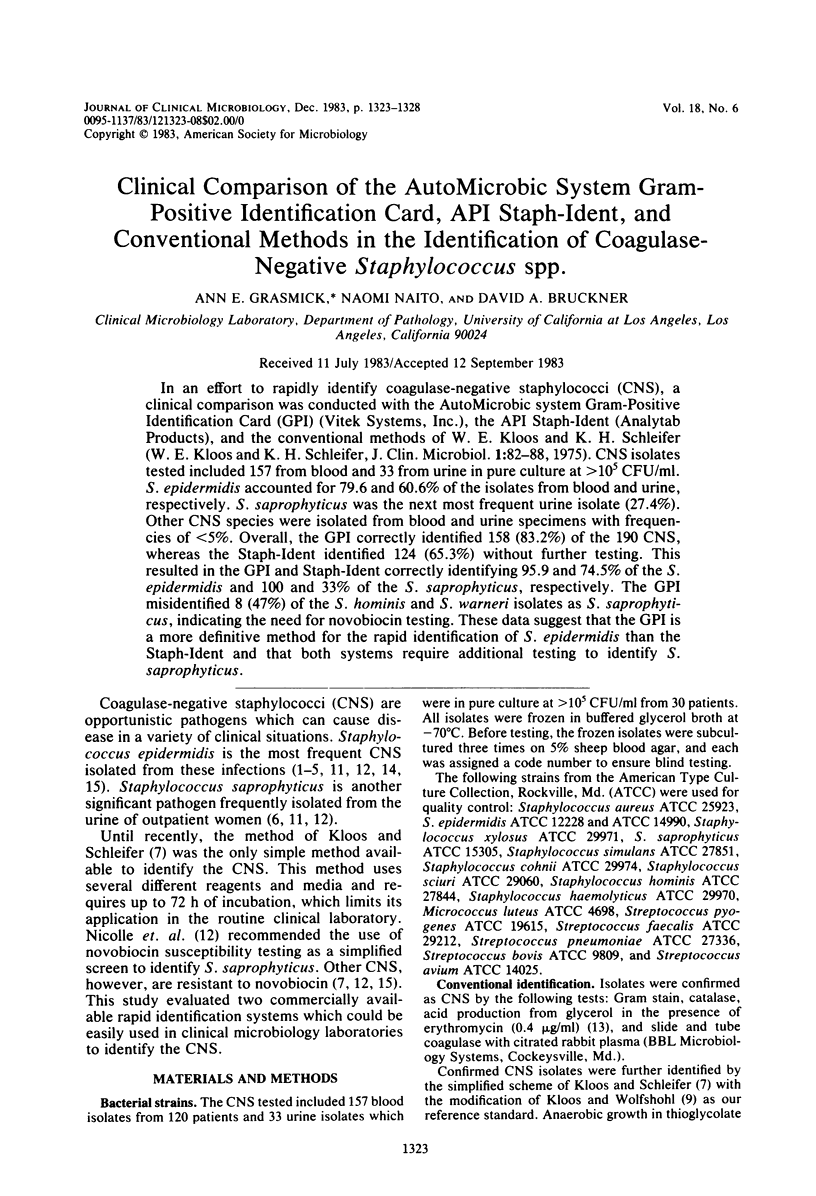
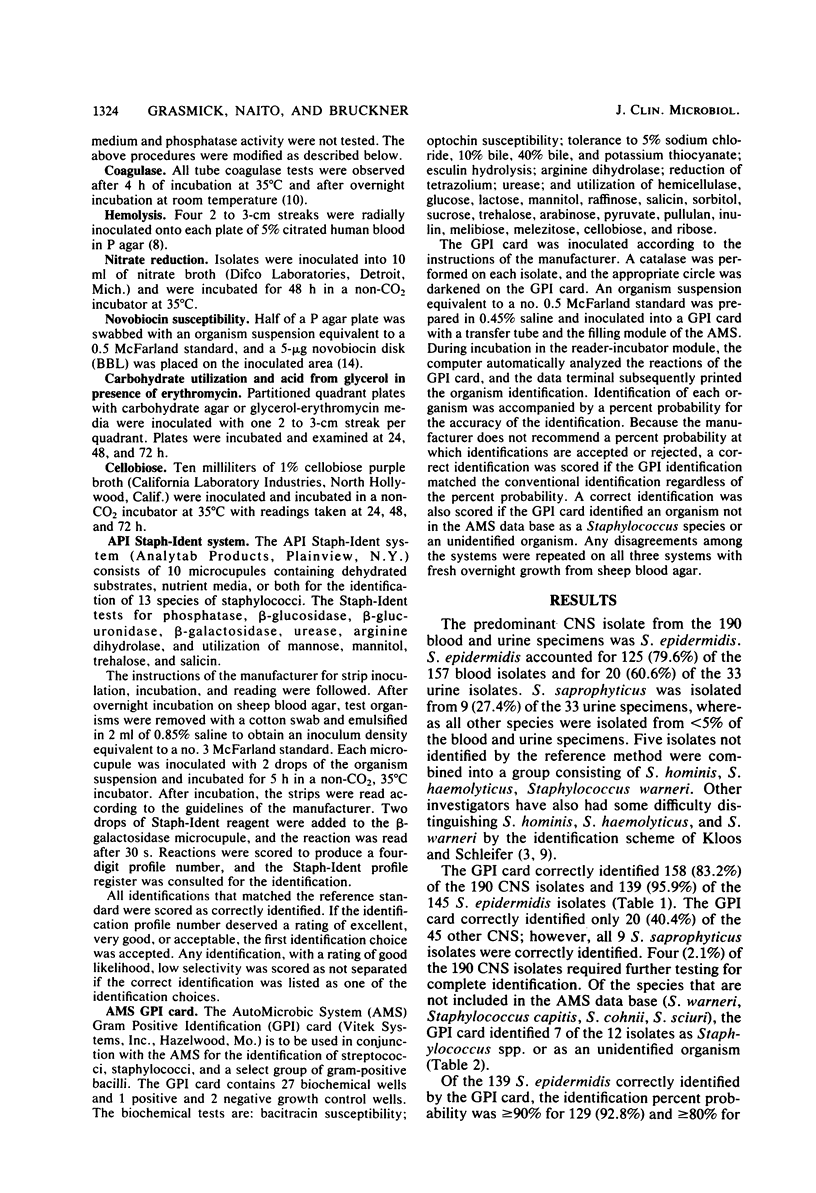
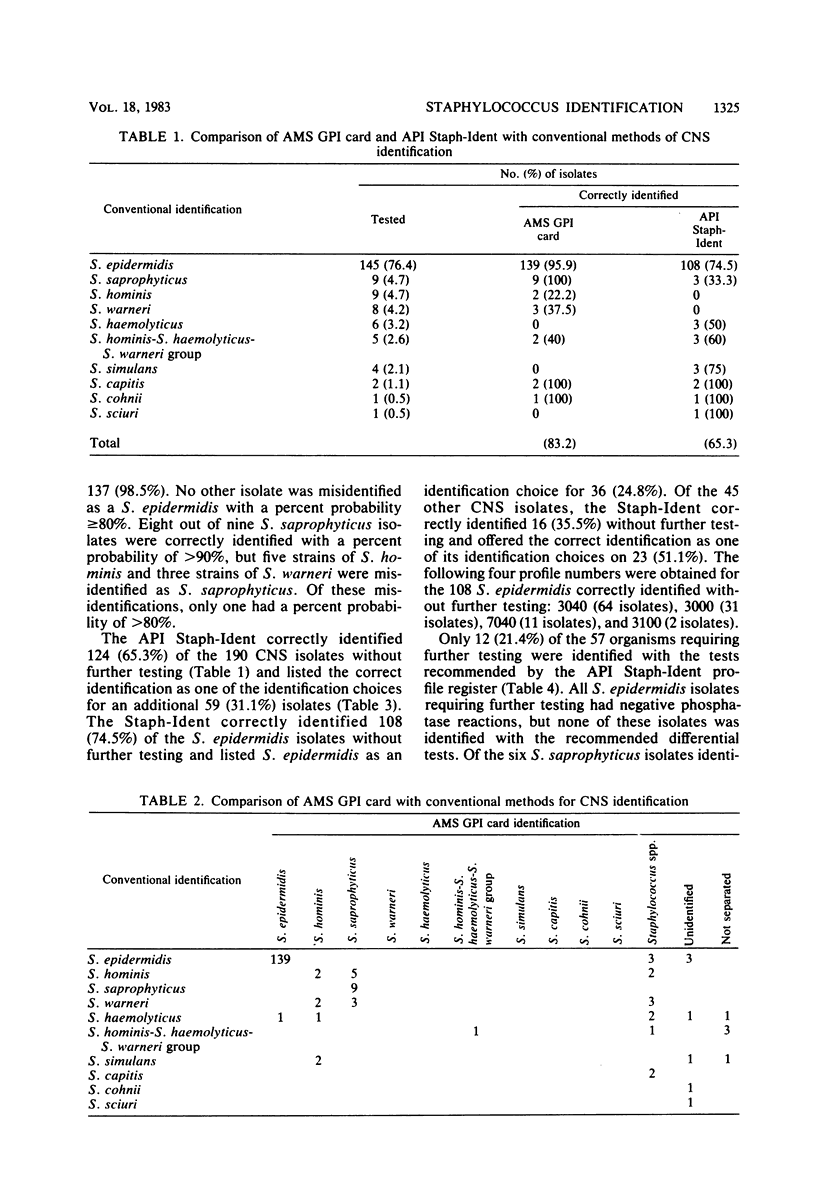
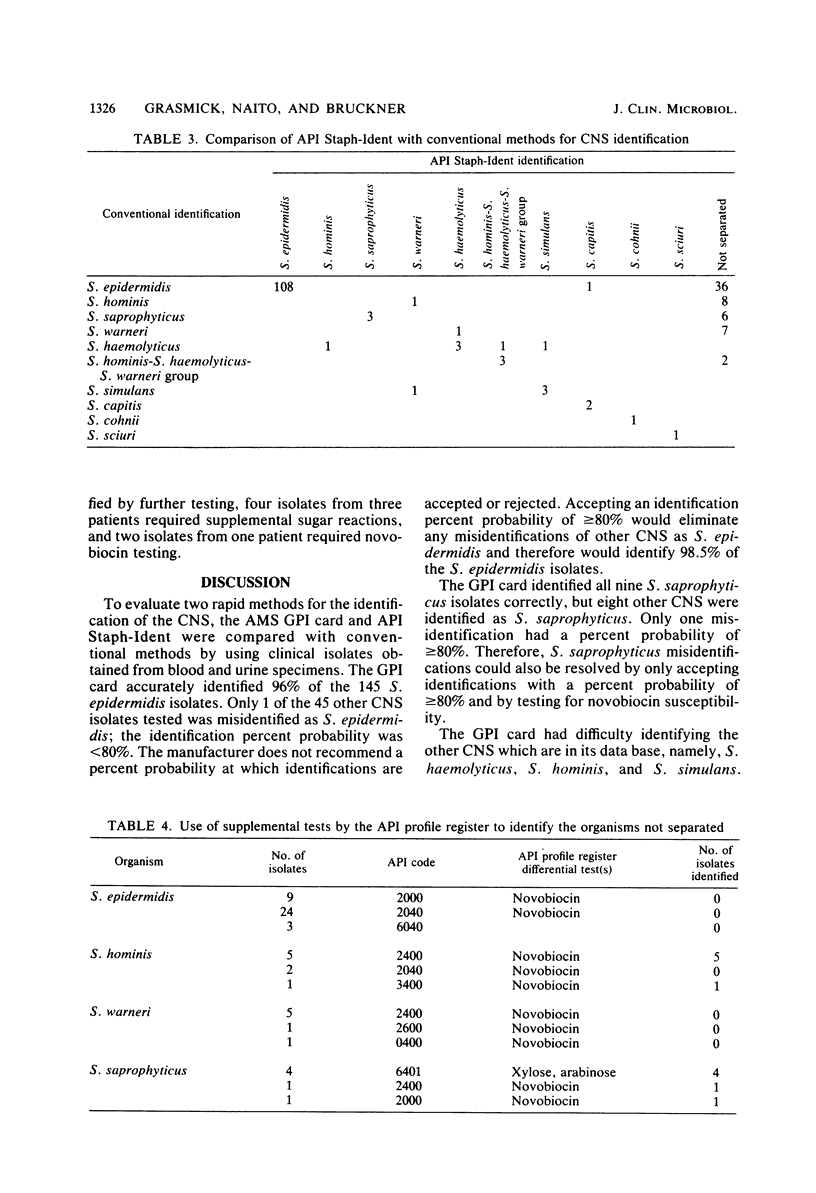
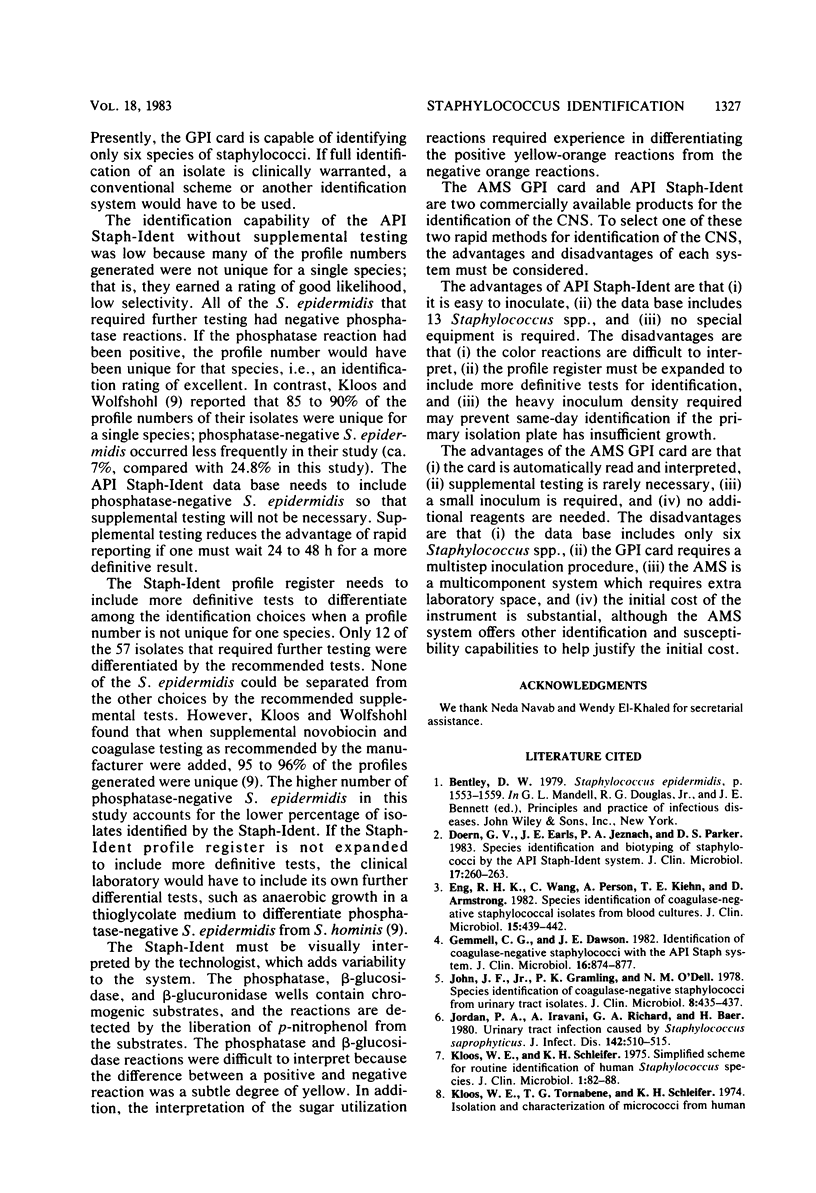
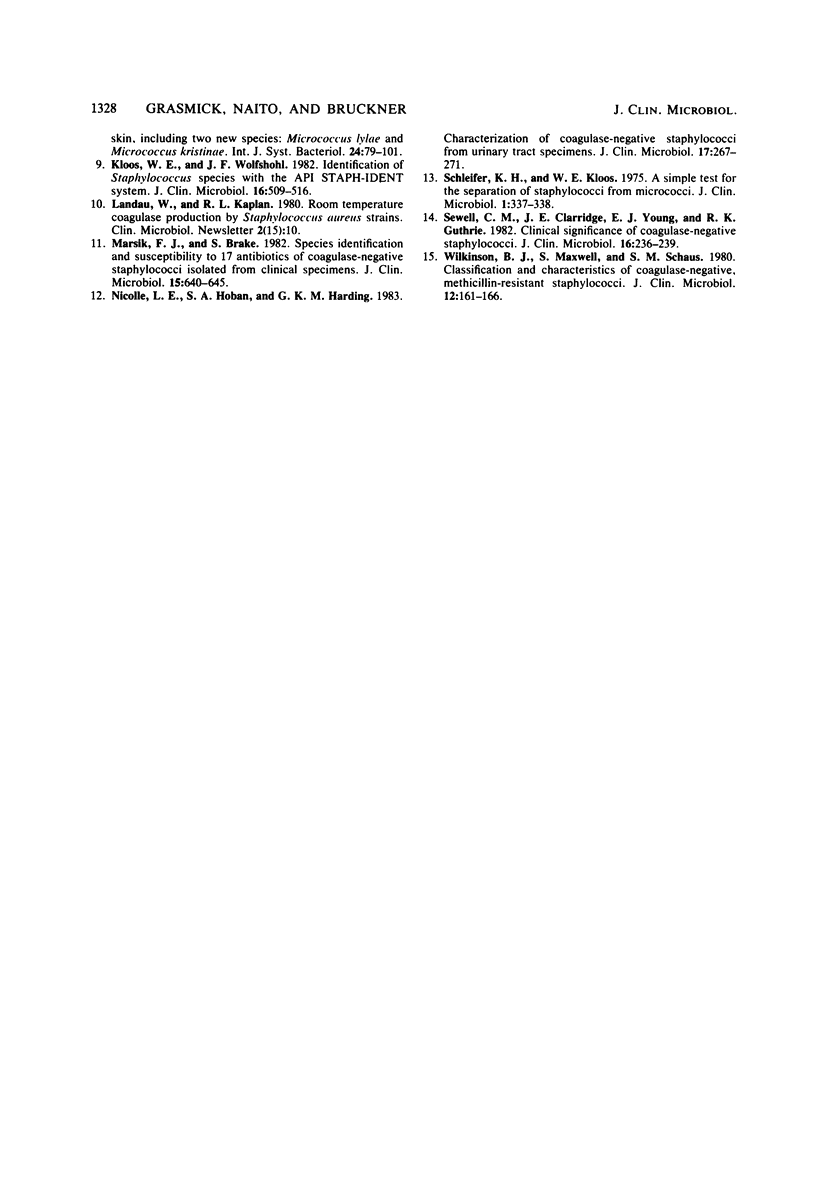
Selected References
These references are in PubMed. This may not be the complete list of references from this article.
- Doern G. V., Earls J. E., Jeznach P. A., Parker D. S. Species identification and biotyping of staphylococci by the API staph-ident system. J Clin Microbiol. 1983 Feb;17(2):260–263. doi: 10.1128/jcm.17.2.260-263.1983. [DOI] [PMC free article] [PubMed] [Google Scholar]
- Eng R. H., Wang C., Person A., Kiehn T. E., Armstrong D. Species identification of coagulase-negative staphylococcal isolates from blood cultures. J Clin Microbiol. 1982 Mar;15(3):439–442. doi: 10.1128/jcm.15.3.439-442.1982. [DOI] [PMC free article] [PubMed] [Google Scholar]
- Gemmell C. G., Dawson J. E. Identification of coagulase-negative staphylococci with the API staph system. J Clin Microbiol. 1982 Nov;16(5):874–877. doi: 10.1128/jcm.16.5.874-877.1982. [DOI] [PMC free article] [PubMed] [Google Scholar]
- John J. F., Jr, Gramling P. K., O'Dell N. M. Species identification of coagulase-negative staphylococci from urinary tract isolates. J Clin Microbiol. 1978 Oct;8(4):435–437. doi: 10.1128/jcm.8.4.435-437.1978. [DOI] [PMC free article] [PubMed] [Google Scholar]
- Jordan P. A., Iravani A., Richard G. A., Baer H. Urinary tract infection caused by Staphylococcus saprophyticus. J Infect Dis. 1980 Oct;142(4):510–515. doi: 10.1093/infdis/142.4.510. [DOI] [PubMed] [Google Scholar]
- Kloos W. E., Schleifer K. H. Simplified scheme for routine identification of human Staphylococcus species. J Clin Microbiol. 1975 Jan;1(1):82–88. doi: 10.1128/jcm.1.1.82-88.1975. [DOI] [PMC free article] [PubMed] [Google Scholar]
- Kloos W. E., Wolfshohl J. F. Identification of Staphylococcus species with the API STAPH-IDENT system. J Clin Microbiol. 1982 Sep;16(3):509–516. doi: 10.1128/jcm.16.3.509-516.1982. [DOI] [PMC free article] [PubMed] [Google Scholar]
- Marsik F. J., Brake S. Species identification and susceptibility to 17 antibiotics of coagulase-negative staphylococci isolated from clinical specimens. J Clin Microbiol. 1982 Apr;15(4):640–645. doi: 10.1128/jcm.15.4.640-645.1982. [DOI] [PMC free article] [PubMed] [Google Scholar]
- Nicolle L. E., Hoban S. A., Harding G. K. Characterization of coagulase-negative staphylococci from urinary tract specimens. J Clin Microbiol. 1983 Feb;17(2):267–271. doi: 10.1128/jcm.17.2.267-271.1983. [DOI] [PMC free article] [PubMed] [Google Scholar]
- Schleifer K. H., Kloos W. E. A simple test system for the separation of staphylococci from micrococci. J Clin Microbiol. 1975 Mar;1(3):337–338. doi: 10.1128/jcm.1.3.337-338.1975. [DOI] [PMC free article] [PubMed] [Google Scholar]
- Sewell C. M., Clarridge J. E., Young E. J., Guthrie R. K. Clinical significance of coagulase-negative staphylococci. J Clin Microbiol. 1982 Aug;16(2):236–239. doi: 10.1128/jcm.16.2.236-239.1982. [DOI] [PMC free article] [PubMed] [Google Scholar]
- Wilkinson B. J., Maxwell S., Schaus S. M. Classification and characteristics of coagulase-negative, methicillin-resistant staphylococci. J Clin Microbiol. 1980 Aug;12(2):161–166. doi: 10.1128/jcm.12.2.161-166.1980. [DOI] [PMC free article] [PubMed] [Google Scholar]


